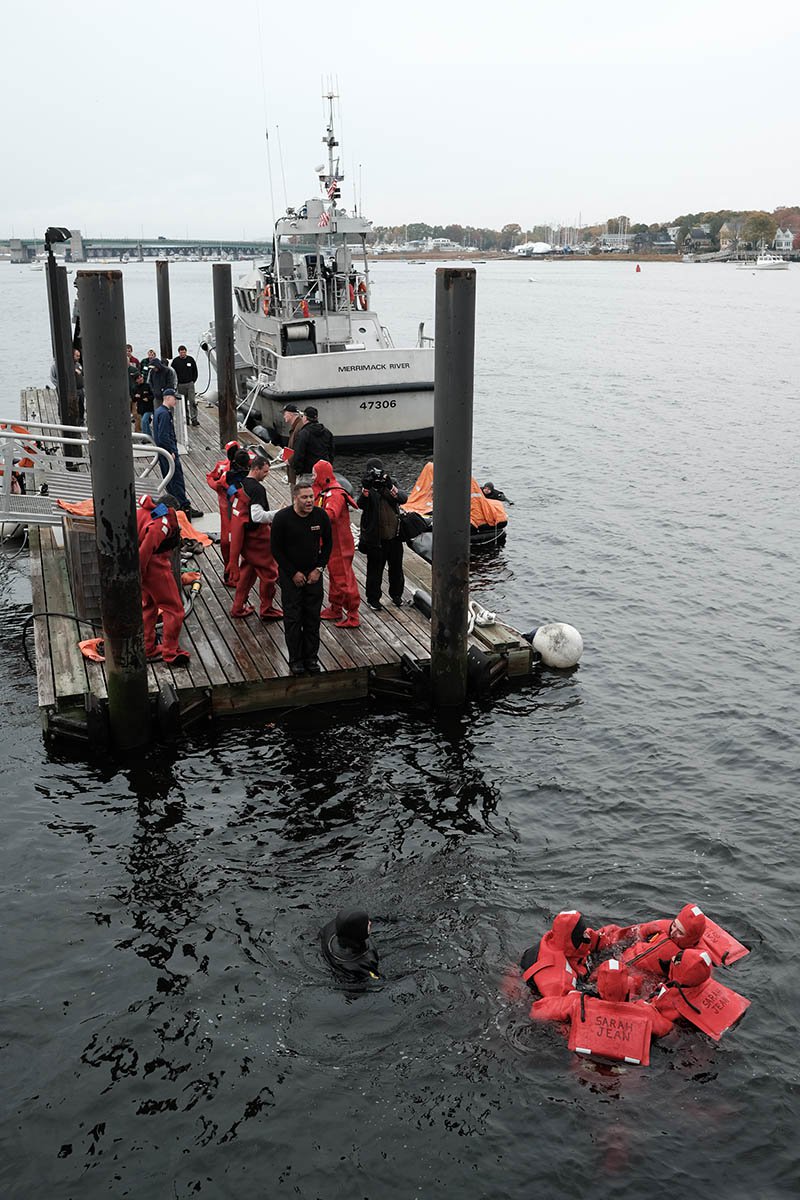In December 2016, Canada’s Transportation Safety Board suggested a federal mandate for fishermen to wear life vests at all times on deck. Touting the success of seatbelt laws, the head of the board, Kathy Fox, noted that “many people, if not all, would probably say even if there wasn’t a regulation they would still wear” a seatbelt.
An immersion exercise at a 2016 safety training in Newburyport, Mass. Jean Paul Vellotti photo.The recommendation was released with a detailed report into the sinking of the dragger Caledonian on Sept. 5, 2015, killing three of the four crew.
“Habits have to change,” Fox said, adding, “You never know when you could end up in the water.”
It’s true that fishermen would improve survival rates by wearing a low-profile PFD on deck. But how would you go about regulating such a mandate? Police can patrol drivers and passengers at a glance from their own vehicles. It’s much more difficult to patrol at sea. Without successful enforcement, mandates aren’t an effective or efficient means of change. And creating more regulations — even with the best intentions — often serves to fortify barriers of communication between fishermen, regulators and enforcement. No new rules should be created without first asking, “How else might we resolve this problem?”
Rather than using the stroke of the pen to mandate the use of PFDs on fishing decks, the National Institute for Occupational Safety and Health Alaska office has been working onboard with fishermen for many years, putting pen to paper with surveys that have led to vast improvements to on-deck PFD designs.
NIOSH exemplifies working with fishermen to bridge the cultural (and practical) gap, making the adoption of safety gear a win for everyone. Thanks to their work and input from hundreds of fishermen, the industry now has gear that will work for the job, rather than the job having to work around the gear.
In his safety training feature on page 30 of the March issue of National Fisherman, Boats & Gear Editor Jean Paul Vellotti reports on the effectiveness of U.S. safety training programs. Some use unique incentives to pull fishermen into safety and survival training, knowing that the more fishermen run drills, the more they will develop muscle memory for emergency procedures and significantly increase their chances of survival.
Safety drills are a growing aspect of our nation’s commercial fishing culture, and it shows in survival stories. The Coast Guard’s Consequences column on p. 9 highlights the success of a crew’s reaction to an emergency “like it was second nature.” Around the Coasts on p. 13 includes the story of the crew of the Astoria, Ore.-based Dungeness boat Star King getting out a mayday call and donning survival suits before their boat overturned on the Columbia River bar during a hectic dump day after a weeklong coastwide tie-up over pricing agreements.
But there is always room for improvement. NIOSH is expanding its reach to East Coast lobster fleets, among others. Their staff works to get fishermen out on the water and back home safely, not to make your work more complicated. Their track record speaks for itself.
They’re the federal government, and they really are here to help.







